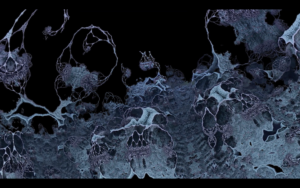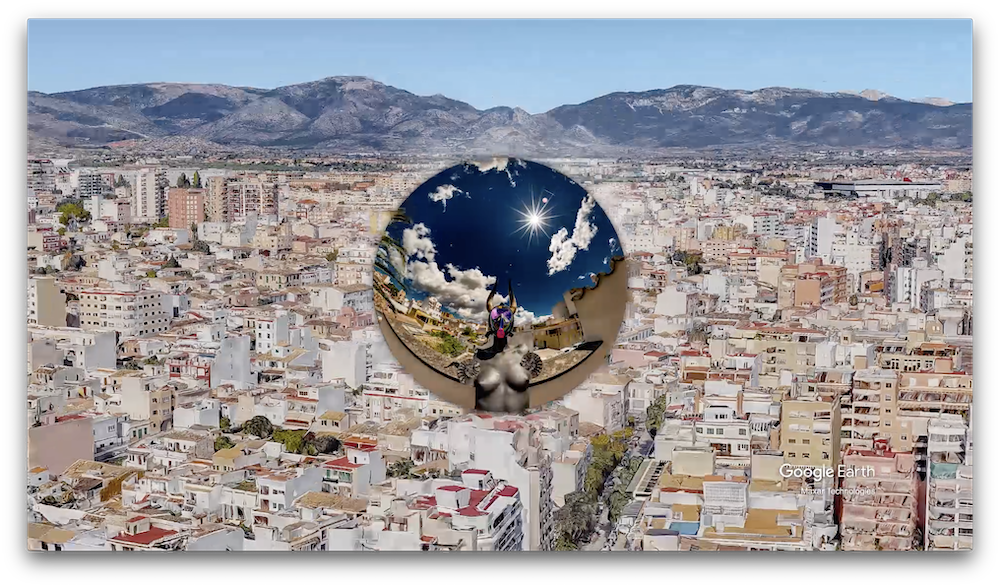-
 Les Fleurs 1
Les Fleurs 1 -
 Les Fleurs 2
Les Fleurs 2 -
 Les Fleurs 3
Les Fleurs 3 -
 Augures Mathematiques 1
Augures Mathematiques 1 -
 Augures Mathematiques 2
Augures Mathematiques 2 -
 Augures Mathematiques 3
Augures Mathematiques 3
-
Loading video, please wait
- 00:00
Hicham Berrada, Les Fleurs 1, 2016.
-
Loading video, please wait
- 00:00
Hicham Berrada, Les Fleurs 2, 2016.
-
Loading video, please wait
- 00:00
Hicham Berrada, Les Fleurs 3, 2016.
-
Loading video, please wait
- 00:00
Hicham Berrada, Augures Mathematiques 1, 2018.
-
Loading video, please wait
- 00:00
Hicham Berrada, Augures Mathematiques 2, 2018.
-
Loading video, please wait
- 00:00
Hicham Berrada, Augures Mathematiques 3, 2018.
About this programme
In his text The Intelligence of a Machine, filmmaker and film theorist Jean Epstein writes that:
“This upheaval in the hierarchy of things becomes more acute through the cinematographic reproduction of either accelerated or slowed down movements. Horses hover above an obstacle; plants gesticulate; crystals couple, reproduce themselves and heal their wounds; lava slithers; water becomes oil, gum, pine pitch; man acquires the density of a cloud, the consistency of vapor; he has become a purely gaseous animal, with feline grace and ape-like dexterity. All the partitioned systems of nature are disarticulated. Only one realm remains: life.” (Jean Epstein, The Intelligence of a Machine, 1949) In a way, Jean Epstein pays homage to the sculptural power of experimental film.
In his work Les Fleurs (2016), which is an evocation of August Strindberg’s Inferno, French Moroccan artist Hicham records the looped deflagration of a sphere in an exploration of matter. A hemisphere of iron nanoparticles is subjected to high-pressure jets and recovers its initial shape. The economy of slowness, the figure of the loop and the repetition of chemical cycles are constant tropes in Hicham Berrada’s films. Les Fleurs is a representative sample of his work as an artist researcher and lab technician given over to scientific experiments and protocols and who attempts to explore the plastic transformation of natural matter through the potentialities of film, revealing the complex temporal modes that organize a concordance of cycles. Thus, the Augures mathématiques series or the Les Fleurs series organize an elastic time that distorts all spatial references, inviting spectators to embark on a subjective, progressive, and infinite journey that leads to an experience of perceptive disorientation.
Pascale Cassagnau
Video programmes

‘How To Tell A Story’?
By associazione culturale Urbs Picta

Animal Games
By Laura Olea López and Suzy Royal

Hicham Berrada. ‘Concordance des temps’
By Pascale Cassagnau

Gabriel Lacomba ‘#crònicapandèmia’
By Jaume Reus

Cao Fei for LOOP
By Hans Ulrich Obrist and Cao Fei

“Time Passed like a Courier with Urgent News”
By Carolina Ciuti

The Dancing States of the Political Body
By Pascale Cassagnau

Watery Witnesses
By Daniela Zyman and Soledad Gutiérrez

As Soon As If It Was Not
By Pedro Torres
